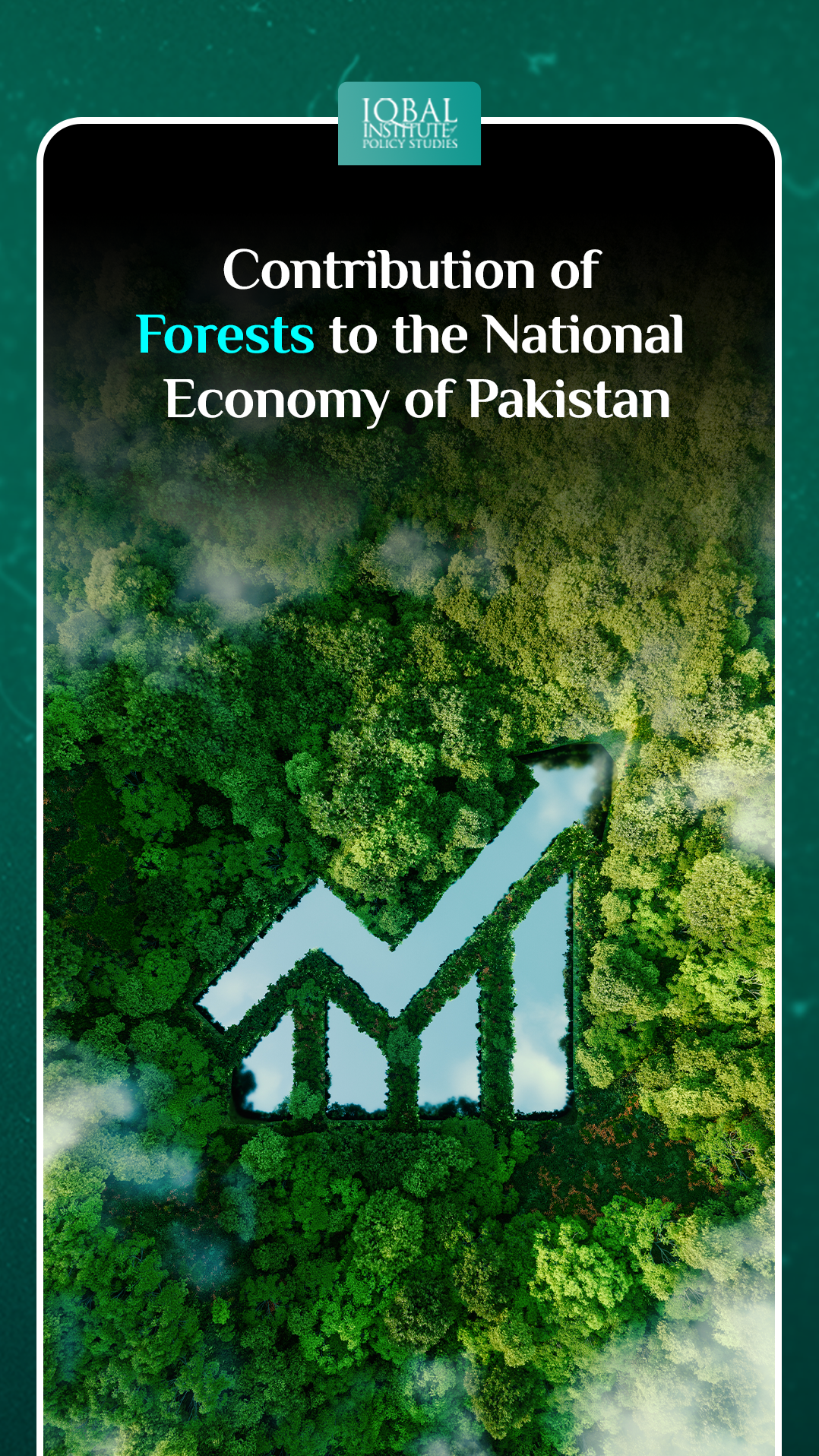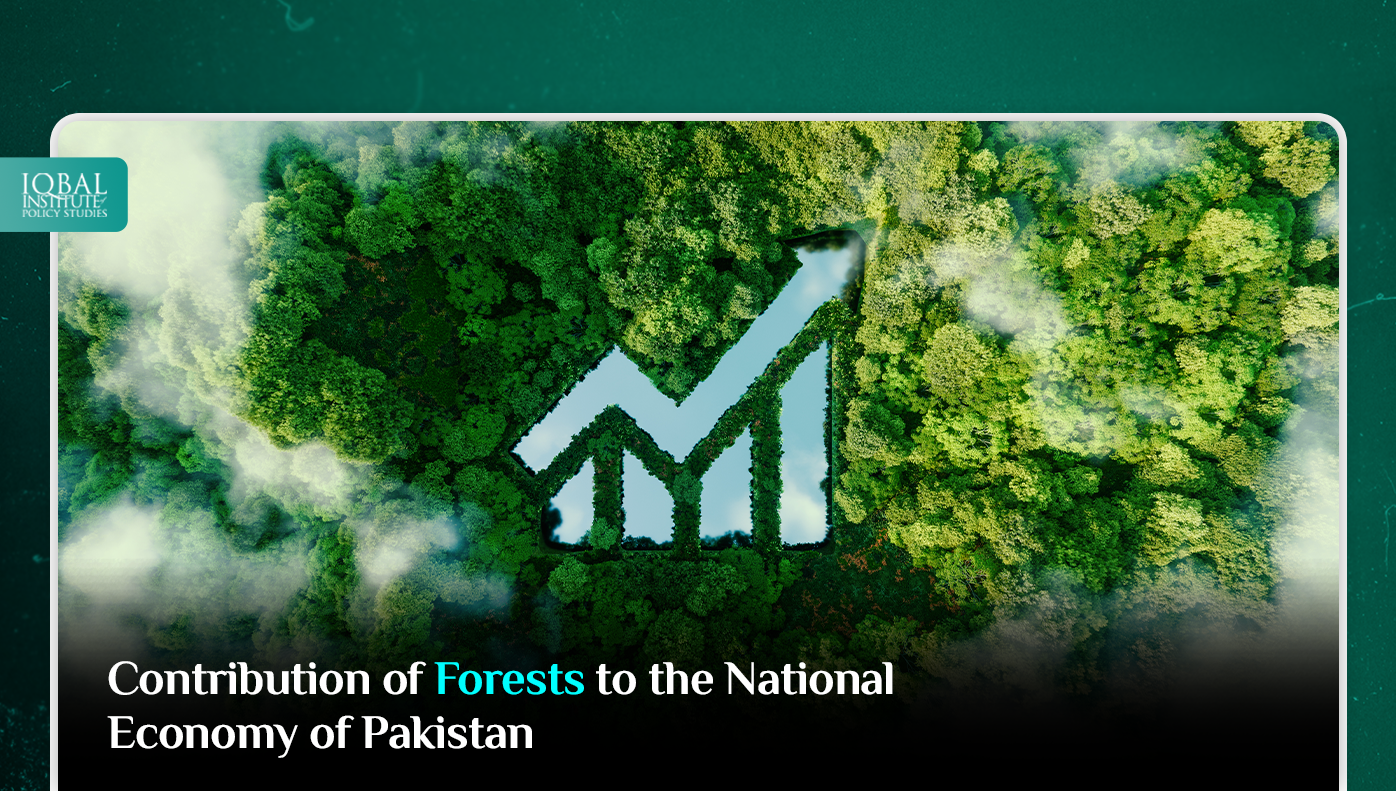The dominant economic theme in human‐forest relationships has been valued abstraction and increasingly intensive management. Forests are climacteric to both the modern economy and the environment. For instance, forests and the industries that rely on them generate income while providing employment, sustenance, and aid in climate mitigation. However, many of the products and services furnished by forests in developing nations are not marketed or assigned a monetary value, resulting in distorted perceptions of the relative significance of different functions and economic problems for forest owners. Moreover, there is an intuitive linkage between economic development and the overexploitation of natural resources, including forests.
Even so, establishing this relationship empirically has proven challenging due to insufficient data and confounding geo-climatic factors. This lack of evidence prevented the developing nations from considering forestry as a priority in the national economic policies, which affects economic and land-use policies, planning and management practices. Owning to the high levels of commercial benefits to households, businesses, and governments provided by forests, the governments should work towards the impetus for protective legislation and policies through the expenditure of resources and analytical effort.
How do Forests Support the National Economy?
Timber and Fuelwood
Timber is widely used in Pakistan as a construction material for buildings, bridges, and railways. Many household items are made of wood, including furniture, sporting goods, and musical instruments. Lack of sufficient wood to meet the demand result in additional costs for replacing domestic supplies with more expensive and less accessible imported materials. Nearly 68% of Pakistan’s population uses firewood as their primary source of energy in households (Jabeen, 2019). In Pakistan, approximately 100,000 people work in the fuelwood trade, generating approximately PKR 11.3 billion ($113 million) annually (The World Bank, 2018).
Job Opportunities
Aside from official employment in forest departments, many labourers work year-round or seasonally in forest management activities. For instance, establishing and maintaining nurseries, preparing planting sites, safeguarding planted stocks, weeding, cleaning, thinning, firefighting, and harvesting. Skilled agricultural, forestry and fishery workers made up 33.2% of the workforce in 2020-21 (Pakistan Bureau of Statistics, 2022). Furthermore, farm forestry, processing of forest-based products, and ecotourism also provide a living for various people. More than 500,000 workers are employed by forest-products industries such as furniture, village carpentry, matches, particleboard, plywood, fiberboard, boats, crates, boxes, paper, pulp, and chipboard (Hassani, 2020).
Forest Products Other Than Timber
Non-timber forest products (NTFPs) are critical to the economy of communities that live in or near forests. It is estimated that approximately 60 million people in the developing world rely on NTFPs for food security, medicines, infrastructure, and raw materials to supplement their monthly income (Zubair, Jamil, Lukac, & Manzoor, 2019). There are numerous non-timber forest products in Pakistan, such as medicinal, aromatic, and culinary herbs; forage and fodder; resin; gums; mazri leaves; honey; silk; mushrooms; wild fruits; chilgoza nuts; pistachio nuts; wild almonds; and wild pomegranate. NTFP collection is a major economic activity. For example, only from one location in the Palas Valley of Pakistan, 15,000 kg morels are exported nationally and internationally, generating revenue of about $343,000 (USD) per year (Zubair, Jamil, Lukac, & Manzoor, 2019). Moreover, 350–400 herbal medicine manufacturing companies and 350 homoeopathic medicine companies are operating in Pakistan, making it one of the leading countries to export medicinal plants (Zubair, Jamil, Lukac, & Manzoor, 2019).
Biodiversity
Pakistan has a rich biodiversity, multiple ecosystems, habitats and species of global significance, which drives the direct and indirect supply of food, fresh water, fibre, support of fisheries, livelihood etc. In Gilgit, for example, 38 markhor trophy hunts generated $2.084 million between the hunting seasons of 2000-01 and 2019-20. 80% of this amount, or $1.667 million, is distributed to local communities operating the markhor trophy hunting programme for conservation and socioeconomic development activities. The remaining 20%, or $0.416 million, is deposited in the government treasury for management (Farhan, 2021). Moreover, the Sindh Forest Department, which oversees a “protected Forest” zone comprising 600,000 hectares of mangroves, estimates that more than 28 thousand households are located in areas neighbouring mangroves. For them, mangroves provide fishing-based livelihoods, fuelwood, and herd animal forage and act as a natural barrier against natural disasters (UNEP, 2020).
Tourism
The forests of Pakistan are vital for tourism as they add scenic beauty to an area. In 2019, 5.9% of the country’s GDP was attributed to tourism, which helped create nearly 4 million jobs (Mohsin, 2021). Over two million foreign tourists visited Pakistan, primarily in the Northern Areas. (Khan, Ali, Zada, Saeed, & Zada, 2022). In Pakistan, nature-based tourism accounts for 21% of all visitors, including visits to scenic landscapes and wildlife viewing (The World Bank, 2018).
Agriculture
Pakistan is primarily an agrarian country, and its agriculture relies on forests for fodder, mulch, pollination, long-term water supplies, and erosion protection. Around 130 million livestock rely on forests for 70% of their required feed in the form of fodder and grazing lands (The World Bank, 2018).
Landscape and Infrastructure Resilience
Forests help to stabilise slopes, regulate water flow, and control erosion. These are critical ecological functions for the resilience of landscapes and infrastructure such as roads, railways, irrigation canals, and dams. The loss of vegetation in watersheds increases the risk of landslides and flash floods, causing infrastructure and settlement damage and the loss of human lives and livestock. For example, the catastrophic floods of 1992 in northern Pakistan were blamed for large-scale deforestation and forest degradation in the mountains (The World Bank, 2018).
Resource of Water
Pakistan is already one of the world’s most water-stressed countries, and the situation is deteriorating due to climate change. The country ranks 14 among the world’s 17 ‘extremely high water risk’ countries (Maqbool, 2021). However, forests help groundwater to recharge and regulate the water supply, reduction of sedimentation in water conveyances and reservoirs. Because of its effect on the water regime, excessive deforestation is a major drought threat to agriculture in downstream areas. Water shortages in agriculture could reduce GDP by more than 4.6pc (DAWN, 2022).
Climate Change
According to the Global Climate Risk Index, Pakistan has been among the top 10 countries most affected by climate change in the past two decades (Rupert, 2022). Low-income countries like Pakistan pay 5 times more on debt payments than those dealing with climate change (Jubilee Debt Campaign, 2021). For instance, the unprecedented floods in Pakistan damages exceeded USD 14.9 billion, and total economic losses reached about USD 15.2 billion (The World Bank, 2022). However, forests play a significant role in mitigating climate change. For instance, carbon sequestration is an important ecological function of forests that contributes to climate change mitigation. The KP forests’ total carbon stock and annual sequestration rate are 153.3 million tons of CO and 6 million tons of CO, respectively. The GB forests’ total carbon stock and annual sequestration rate are 16.95 million tons of CO2 and 1.3 million tons of CO, respectively (The World Bank, 2018).
Gender Equality
Forests provide monetary and non-monetary benefits to both men and women in forest communities worldwide. In Pakistan, women are more reliant than men on gathering food, fuel, fodder, grazing animals, and fetching water (The World Bank, 2018). However, they have limited influence over forest management and benefit-sharing decisions. Improving forest governance will create opportunities to empower women and poor communities.
Conclusion
The contribution of forests to the national economy and to the livelihoods of forest-dependent communities is significant. However, the deforestation rate in Pakistan is exceeding at a fast pace. This puts a strain on its already struggling economy. Therefore the government of Pakistan must adopt intelligent policies for the aforestation and conservation of existing forests and plantation of new forests.
References
DAWN. (2022, November 17). Climate change may cut Pakistan’s GDP by 18pc to 20pc: World Bank. Retrieved from DAWN: https://www.dawn.com/news/1721479#:~:text=The%20report%20stated%20that%20between,labor%20productivity%2C%20and%20undermine%20health.
Farhan, F. (2021, May 27). Trophy hunting for economic growth? Retrieved from Express Tribune: https://tribune.com.pk/story/2298670/trophy-hunting-for-economic-growth
Hassani, N. J. (2020, February 28). Pakistan’s Forestry Sector Contribution to the Economy is the Lowest in the Region. Retrieved from Forestrypedia: https://forestrypedia.com/pakistans-forestry-sector-contribution-to-the-economy-is-the-lowest/
Jabeen, R. (2019, May 22). The green emergency: deforestation in Pakistan. Retrieved from The World Bank : https://blogs.worldbank.org/endpovertyinsouthasia/green-emergency-deforestation-pakistan
(2021, October). Jubilee Debt Campaign. Retrieved from https://jubileedebt.org.uk/wp-content/uploads/2021/10/Lower-income-countries-spending-on-adaptation_10.21.pdf
Khan, J., Ali, A., Zada, M., Saeed, I., & Zada, S. (2022, March 8). Pakistan’s Tourism Industry: Full of potential, but still lagging behind. Reserach Square. doi:https://doi.org/10.21203/rs.3.rs-1261735/v1
Lin, B., & Raza, Y. M. (2019, May 10). Analysis of energy related CO2 emissions in Pakistan. Science Direct. doi:https://doi.org/10.1016/j.jclepro.2019.02.112
Maqbool, N. (2021). Water Crisis in Pakistan: Manifestation, Causes and the Way Forward. Retrieved from PIDE: https://pide.org.pk/research/water-crisis-in-pakistan-manifestation-causes-and-the-way-forward/
Mohsin, M. (2021, Feruary 6). Resurgence of Pakistan’s Multi-Billion Dollar Tourism Industry. Retrieved from Macro Pakistani: https://macropakistani.com/tourism-in-pakistani-fma/
Pakistan Bureau of Statistics. (2022). LABOUR FORCE SURVEY 2020-2021. Government of Pakistan Ministry of Planning, Development & Special Initiatives. Retrieved from https://www.pbs.gov.pk/sites/default/files/labour_force/publications/lfs2020_21/LFS_2020-21_Report.pdf
Rupert, J. (2022, September 29). USIP. Retrieved from https://www.usip.org/publications/2022/09/pakistan-presses-us-lead-global-response-climate-disasters
The World Bank. (2018, June). FORESTS FOR GREEN PAKISTAN: FOREST POLICY NOTE. Open Knowledge. Retrieved from The World Bank: https://openknowledge.worldbank.org/handle/10986/30936
The World Bank. (2022, October 28). Pakistan: Flood Damages and Economic Losses Over USD 30 billion and Reconstruction Needs Over USD 16 billion – New Assessment. Retrieved from https://www.worldbank.org/en/news/press-release/2022/10/28/pakistan-flood-damages-and-economic-losses-over-usd-30-billion-and-reconstruction-needs-over-usd-16-billion-new-assessme#:~:text=The%20assessment%20estimates%20total%20damages,reach%20about%20USD%
UNEP. (2020, July 24). Pakistan restores mangroves for economy and ecosystem benefits. Retrieved from UN Enviornmnet Programme: https://www.unep.org/news-and-stories/story/pakistan-restores-mangroves-economy-and-ecosystem-benefits
Zubair, M., Jamil, A., Lukac, M., & Manzoor, S. A. (2019). Non-Timber Forest Products Collection Affects Education of Children in Forest Proximate Communities in Northeastern Pakistan. MDPI. doi:https://doi.org/10.3390/f10090813



Leave a Reply